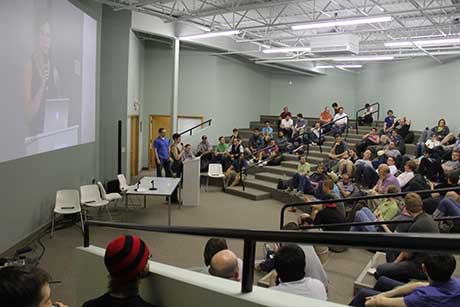HOME | ABOUT US | MEDIA KIT | CONTACT US | INQUIRE
HOME | ABOUT US | MEDIA KIT | CONTACT US | INQUIRE

When it comes to a regional work force, how does one measure competitiveness?
One way is to assess where your strengths are as a community. When compared to more than a dozen peer metro areas across the U.S. (largely in the intermountain states between the Rockies and Appalachians), Kansas City has a significant concentration of workers in areas that are vital drivers of the economy.
According to figures from the Mid-America Regional Council, this location quotient— which compares numbers of jobs in a given sector to their distribution in the broader national economy—shows that Kansas City, relative to national averages:
Has 2.97 times as many communications jobs, ranking it No. 1 in that sector.
Has 2.85 times as many heavy manufacturing jobs, trailing only Nashville.
Has 2.61 times as many jobs in the logistics sector, trailing only Omaha and Indianapolis.
Has 1.79 times as many back-office jobs, yielding another No. 1 ranking.
The region’s advantages don’t stop there. It also ranks No. 3 in finance—a Location Quotient (LQ) of 1.48, behind only Charlotte and Omaha), architecture and engineering (LQ of 1.42, behind only Denver and Austin), and computer-related jobs (LQ of 1.54,
behind only Austin and Denver).
One area targeted for growth as a civic goal is bolstering the number of companies in the life-sciences sector, where the LQ of 1.05 ranks Kansas City 8th among the 13 peer cities.
It is not, however, the concentration of jobs in key sectors that defines Kansas City, but what those workers do. Again, Kansas City has a longstanding track record of output per worker hour that remains measurably better than national averages. Post-recession declines in that key category are reasons for concern, according to a study issued earlier this year by MARC and the Brookings Institution, but the difference is still measurable.
On an inflation-adjusted basis, that productivity gap produced 6.6 more output per worker than the nation overall in 1990. And while it has waxed and waned in the quarter-century since, the gap in Kansas City’s favor now stands at 4.7 percent, slightly above its 25-year low of about 4.6 percent in 1998.
The challenge for this region, as MARC noted in its Prosperity at a Crossroads Report, is shaping public policy so that Kansas and Missouri work together to eliminate factors that contribute to the narrowing of that gap. That’s both a defensive and pro-active mandate; even if the two states were able to forge a mutually acceptable set of economic-development policies, they wouldn’t do so in a vacuum: Like every U.S. metro area, Kansas City is subject to forces far outside its control in a global economy, and must promote business growth that taps in to emerging markets worldwide.
One thing that has produced demonstrable returns for Downtown Kansas City has been the powerful draw created by the revival effort. Already, technology companies like Omaha-based MindMixer and The Nerdery, from Minneapolis, have made the call to relocate their headquarters to this area after assessing the way changes here have positioned the city as a magnet for the kind of knowledge workers they’re looking for.
The Nerdery announced in November that it would create 100 jobs by moving into the former Western Union building at 100 E. Seventh St. MindMixer will bring similar numbers of software and IT workers to offices in the Crossroads district.